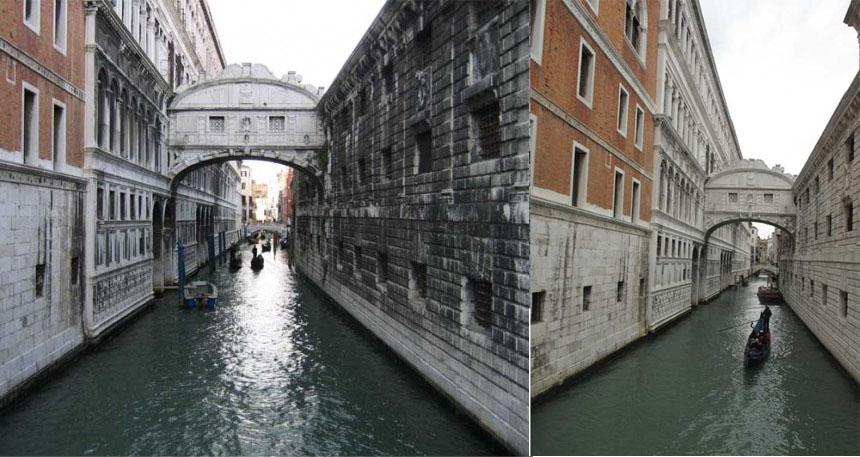Historic Preservation efforts in San Francisco and Venice.
San Francisco sports some recognizable landmarks, despite being heavily influenced by historical elements from around the world, the city has been able to create its own eclectic building style. One such example is the Palace of Fine Arts; San Francisco Architect Bernard Maybeck designed the Palace of Fine Arts for the historic 1915 Panama-Pacific International Exposition. Palace of Fine Arts is every inch a butchered replica of Greek and Roman ruins but that’s exactly what the design intent was. The design did successfully create a serene public landscape next to the residential neighborhoods and has become a popular tourist attraction.
Bernard Maybeck’s firm was the predecessor of Hans Gerson’s Architectural practice. Hans Gerson eventually partnered with San Francisco Architect Harry Overstreet who is our Joint-venture partner for institutional work. Harry Overstreet was involved in the reconstruction and restoration of the famous landmark in the 1960s with Mr Gerson. The work included seismic upgrades and structural preservation, restoration of the Lagoon and landscaping. There was also extensive work done in 2010 because the palace continued to be ravaged by time and nature (specifically the loma prieta earthquake of 1989). Seismic design is the top most concern in the design and planning of new buildings and communities in San Francisco bay area and preservation of existing buildings.
By contrast a much older city like Venice, built in 1500 ADs faces the damaging high tides of the Adriatic sea and needs historic preservation at an urban scale. High waters constantly splash against the permeable bricks that sit above the marble foundations, causing saltwater to soak into the bricks and cause irreparable damage. The outer layers of the foundation has water resistant stone protecting the wood pylons inside. These wood pylons were pounded 10 or 15 feet to the bedrock below. As long as the water washes against this lower level, the structure above is well protected.
MOSE (Modulo Sperimentale Elettromeccanico), is an ambitious effort to prevent flooding through the installation of 78 mobile gates. The gates will be installed at the three entrances to the lagoon and are designed to separate the lagoon from the Adriatic Sea. The project is expected to be fully completed by 2015, if there aren’t any more bureaucratic hurdles and ongoing opposition that could cause delays. Opposition is primarily from environmental groups specifically related to the cost of construction and maintenance. There is also significant concern about the processes used to construct the caissons that could damage the ecosystem, upset the hydro geological balance and pollute the lagoon further.
One Photograph below was taken in 2004 the other in 2012, can you tell which is which?
Answer: The photo on the right was taken in December 2012 – Just after major flooding in November which caused high water to reach 5 feet, (sixth highest level since records began in 1872). The pictures above taken with my camera suggest that preservation efforts seem to be working cause the ‘almost’ same view shows less mold and deterioration, 8 years later. I took a lot of other pictures showing absolutely no signs of flooding from just a month before my visit there. What do you think?


